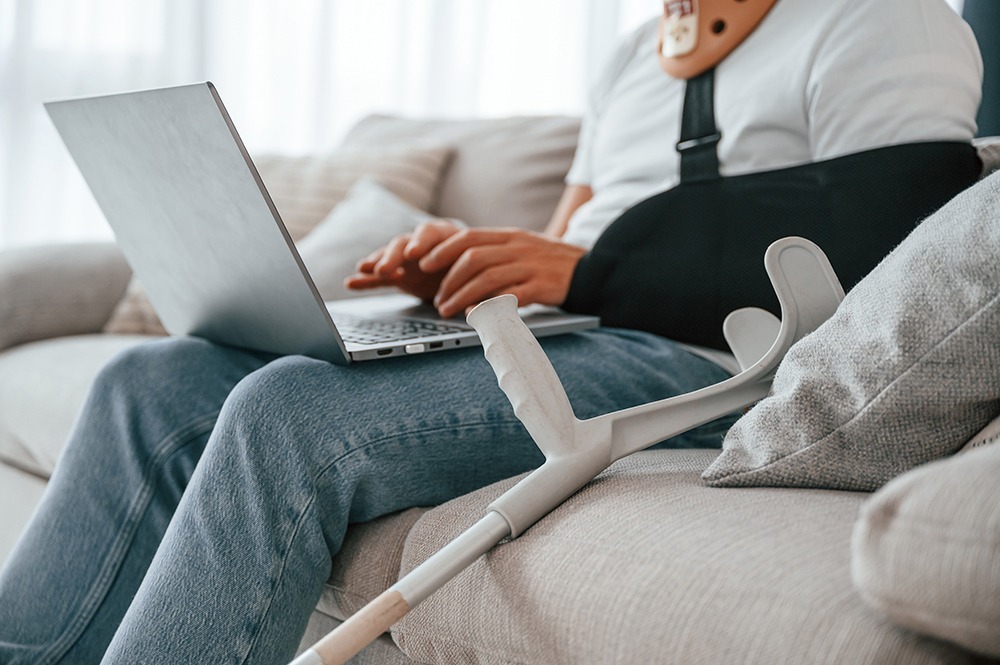From Floor to Lawsuit: How to Turn a Slip and Fall Into a Strong Case
Share:
Slip and fall accidents can happen anywhere—at the grocery store, a restaurant, your workplace, or even a neighbor’s home. One second you’re walking, the next you’re on the ground, stunned, embarrassed, and possibly injured. While some falls only result in a bruise or sore muscles, others can cause serious injuries like broken bones, concussions, or spinal damage.
And here’s the tricky part: what you do immediately after a slip and fall can make or break your ability to protect your health and pursue fair compensation if negligence played a role. This guide will walk you through the critical steps to take right after a slip and fall accident—step by step—so you know exactly how to respond if it happens to you or someone you love.
Step 1: Check Yourself for Injuries
A slip and fall accident can leave you dazed and disoriented. The very first thing you should do is stop, breathe, and carefully assess your condition. Don’t rush to get up. Adrenaline often masks pain, meaning you might not realize you’ve sustained a serious injury until hours later. Look for immediate signs of trauma like swelling, severe pain, dizziness, or disorientation. If you suspect a head, back, or neck injury, remain still and wait for help—moving could worsen the damage.
Common slip and fall injuries include sprained ankles, fractured hips, concussions, and spinal injuries. These injuries often require long-term care, and documenting them early is critical for both treatment and legal claims.
Important Advice: Always err on the side of caution. Even if you think you’re okay, let a doctor decide. Internal injuries or concussions can be silent but life-threatening.
Step 2: Report the Accident Immediately
Once you’ve assessed your condition, the next step is reporting the incident. If you’re in a business or public space, notify the manager or supervisor right away. Insist on filing an incident report and request a copy for your records. This report becomes a key piece of evidence in proving that the accident actually occurred and that it was documented at the time.
If you slip and fall at work, follow your employer’s injury reporting policy without delay. Timely reporting not only protects your health—it’s also essential for preserving your workers’ compensation rights.
Statistic: According to the National Floor Safety Institute, falls account for over 8 million emergency room visits each year, making them one of the leading causes of workplace and public liability claims.
Step 3: Document the Scene
Hazardous conditions that cause falls can vanish quickly—spills get wiped, ice melts, broken tiles are repaired. That’s why documenting the scene immediately is so important. Use your phone to take photos or videos of the exact spot where you fell. Capture the hazard itself (like a puddle, debris, or uneven flooring), the wider environment (poor lighting, lack of warning signs), and your visible injuries.
Also, note details like the date, time, and weather conditions. Small details may seem insignificant at the time, but they can become crucial when building your case.
Pro Tip: Take more photos than you think you need—close-ups, wide shots, and multiple angles. In a legal claim, you can never have too much evidence.
Step 4: Gather Witness Information
Eyewitnesses can make a huge difference in proving your claim. If someone saw you fall—or noticed the dangerous condition beforehand—ask for their name and contact information. Witness statements can provide an unbiased account that confirms your version of events, which is especially valuable if the property owner disputes liability.
Even if they only noticed the hazard before or after your fall, their testimony could help establish that the condition was present long enough for the property owner to have corrected it.
Statistic: In personal injury cases, claims supported by independent witnesses are more than twice as likely to succeed compared to those relying solely on the victim’s testimony.
Step 5: Preserve Evidence
Don’t toss out the clothing and shoes you were wearing during the fall. They might carry physical evidence—like water stains, oil residue, or torn fabric—that supports your case. Store them in a safe place without washing or altering them. These items could later be inspected as part of your claim.
This small step can have a big impact when arguing that the property owner’s negligence created the conditions for your injury.
Pro Tip: Place your clothing and shoes in sealed bags and label them with the date of the incident. Keeping them in “evidence condition” adds credibility.
Step 6: Seek Medical Care Promptly
Slip and fall injuries can worsen over time if untreated. Always see a doctor—even if you believe you’re fine. Many injuries, such as concussions or internal bleeding, don’t produce immediate symptoms. A medical evaluation provides both the care you need and the official documentation that links your injuries to the accident.
Following your doctor’s orders also shows that you’re taking your recovery seriously, which strengthens your claim for damages.
Statistic: The CDC reports that one in five falls causes a serious injury such as broken bones or a head injury. Immediate medical attention dramatically improves recovery outcomes.
Step 7: Be Cautious With Insurance Companies
Insurance adjusters often contact victims quickly, hoping to minimize payouts before the full extent of injuries is known. They may ask for recorded statements, offer quick settlements, or push you to sign documents. Remember, their job is to save the insurance company money—not to help you.
Never admit fault, downplay your injuries, or accept an offer without consulting a lawyer. Settling too soon could mean walking away with far less than your case is worth.
Important Advice: Politely decline to provide recorded statements or sign anything until you’ve spoken with an attorney who can protect your interests.
Step 8: Contact a Slip and Fall Lawyer
Finally, reach out to a skilled personal injury lawyer as soon as possible. Slip and fall claims require proving that the property owner was negligent—and that negligence caused your injuries. This can involve reviewing security footage, subpoenaing maintenance records, or bringing in expert witnesses.
An experienced lawyer will investigate the scene, negotiate with insurers, and fight to recover compensation for your medical bills, lost wages, pain, suffering, and future care needs.
Pro Tip: In Florida and Georgia, the statute of limitations for personal injury cases is generally two years. The sooner you contact a lawyer, the stronger your case will be.
Key Takeaways
- Always check for injuries and seek medical attention, even if you feel fine.
- Report the accident immediately and request a written report.
- Document the scene with photos and witness statements.
- Preserve clothing and other evidence.
- Speak with a personal injury lawyer before dealing with insurance adjusters.
Don’t Wait—Protect Your Rights Today
If you or a loved one has suffered a slip and fall accident in Florida or Georgia, you may be entitled to significant compensation. At DuFault Law, our experienced attorneys know how to build strong cases and fight back against insurance companies.
- Call us at (239) 422-6400
- Email us at contact@dufaultlaw.com
- Or Visit our Contact Page to schedule a consultation



Comments are closed